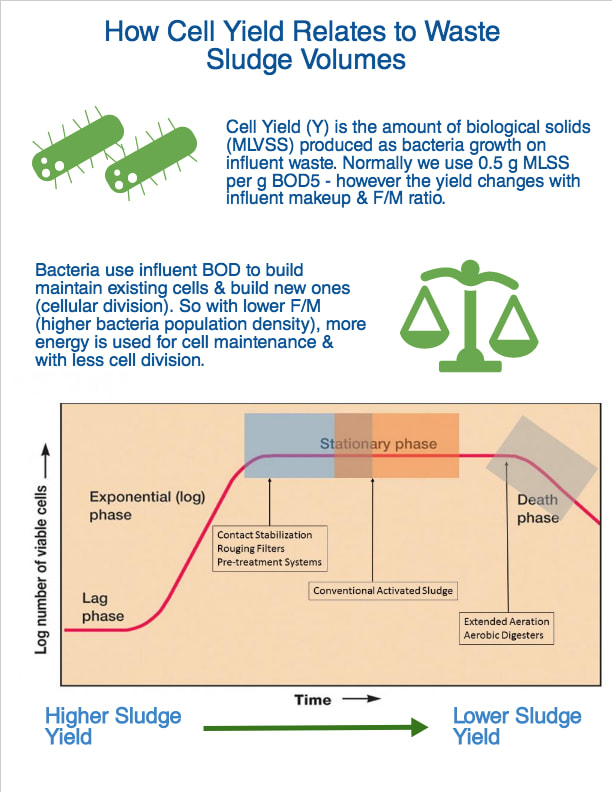What are waste biosolids? The wasted MLSS contains an aggregate of biological polymers, insoluble organics/inorganics, living & dead cells, and entrained water. The biggest changing variable here for sludge processing is the amount of water trapped in the floc which means more work on dewatering solids.
We know that microbial cells divide & use more oxygen when in an environment with high levels of soluble BOD. As the amount of soluble BOD in the water phase decreases, cellular division slows. In high F/M conditions, an abundance of soluble BOD relative to the cells results in much higher respiration rates and percent of living vs dead microbes in the system. In lagoons (by nature a higher F/M system) we often see yields of 0.5 - 0.7 lb MLVSS per lb of influent BOD5 (soluble organic).
In activated sludge and attached growth systems, we increase microbial population density giving a lower F/M when compared to lagoon systems. Since microbes always use a portion of the influent BOD for cellular maintenance - the higher number of cells means more energy is going to maintenance than a system with fewer cells. The result is fewer lbs of living cells produced per lb of influent organic.
So why not operate at extremely low F/M to make wasting requirements much lower? Well here are the limits to running at extreme low F/M:
- Oxygen requirements to keep even endogenous (death phase biomass) in the system
- Ability to separate biosolids in the clarifiers
- Deflocculation - low F/M lose ability to hold solids in aggregate resulting in pin floc


 RSS Feed
RSS Feed